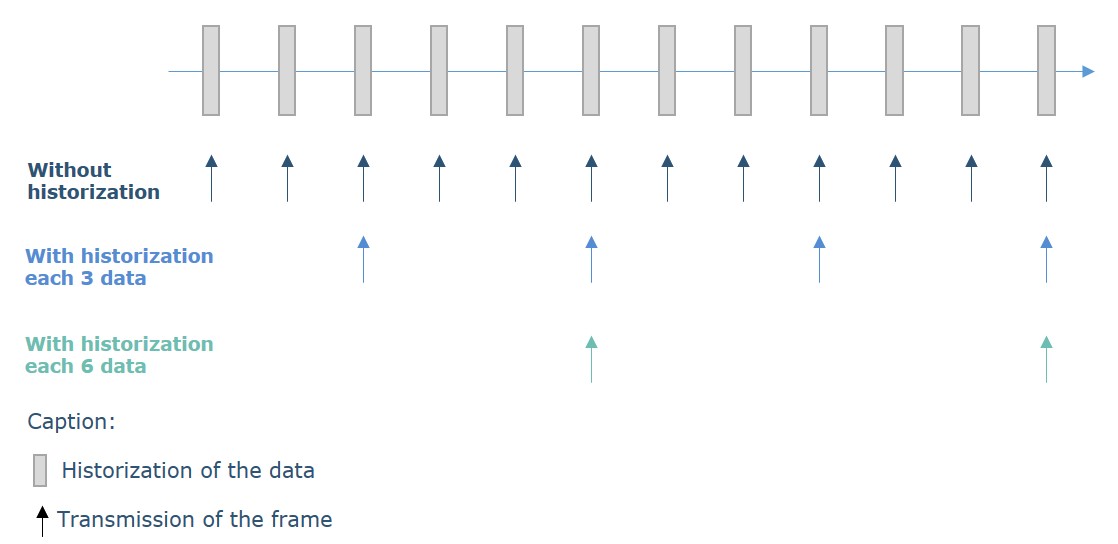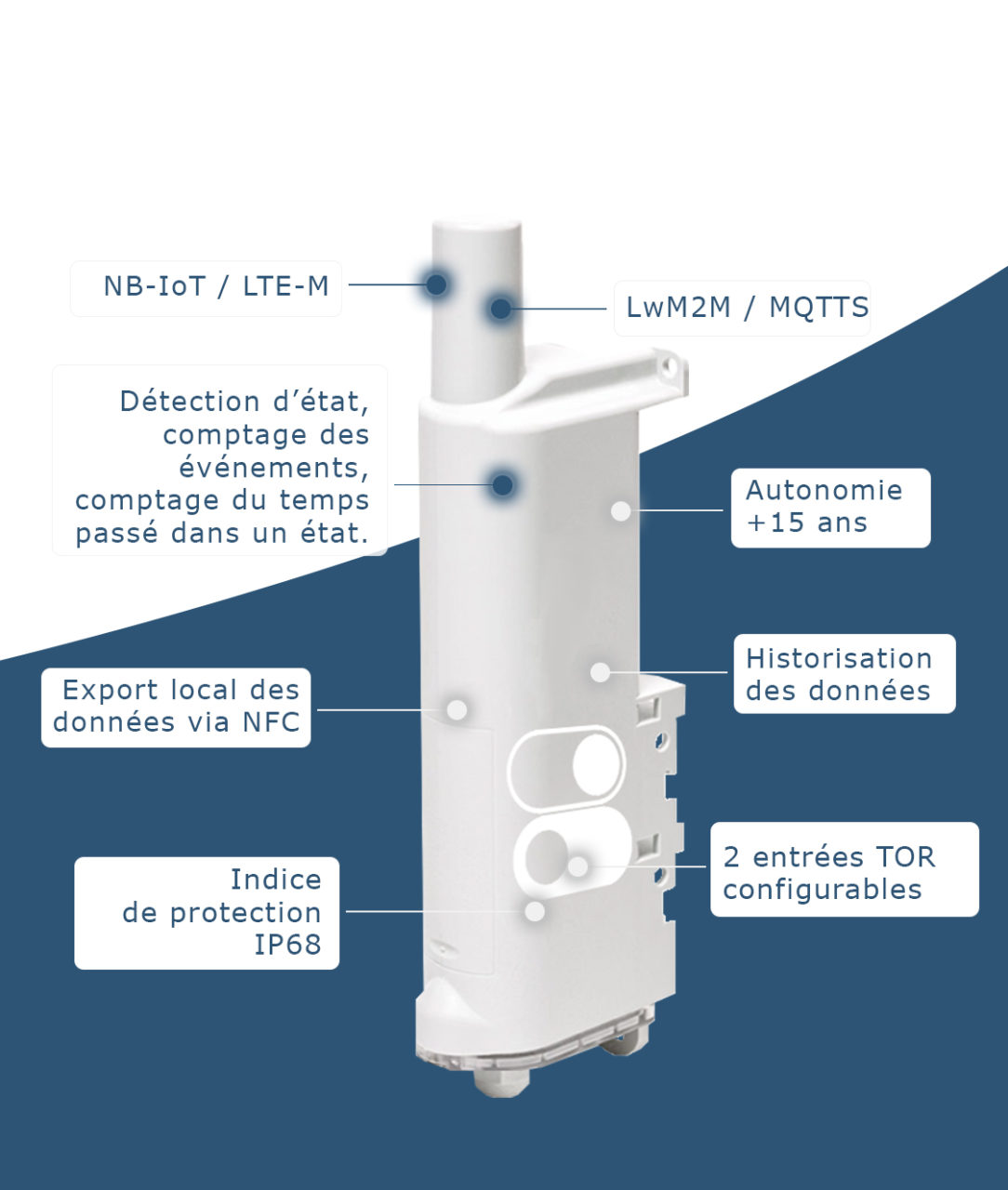What is historization and what is it for?
The historization system embedded in our products allows to send multiple data collected at different times in a single frame.
This running mode « periodical with historization » enables battery optimization by sending less frames while keeping a high granularity.
Concretely, what's going on?
I use a PULSE or a TEMP and I want a measure every 10 minutes:
- Without historization: the product sends 1 frame (with 1 measure) every 10 minutes;
- Thanks to historization I can send less messages:
Transmit a frame every half-hour, with 3 data memorized
Transmit a frame every half-hour, with 6 data memorized
… up to the maximum size limit of the available radio frame. [1]

What benefits?
With an optimal network coverage, changing the configuration of my product from a transmission every 10 minutes (140 frames per day) to a transmission every hour (24 frames per day), I double my autonomy while kipping the same number of collected data per day.
In conclusion, historization allows to considerably optimize the product’s autonomy without penalize the quantity of data sent.
For the Sigfox version of our products, the frame capacity of a PULSE is 4 data memorized and 5 data memorized for a TEMP.


